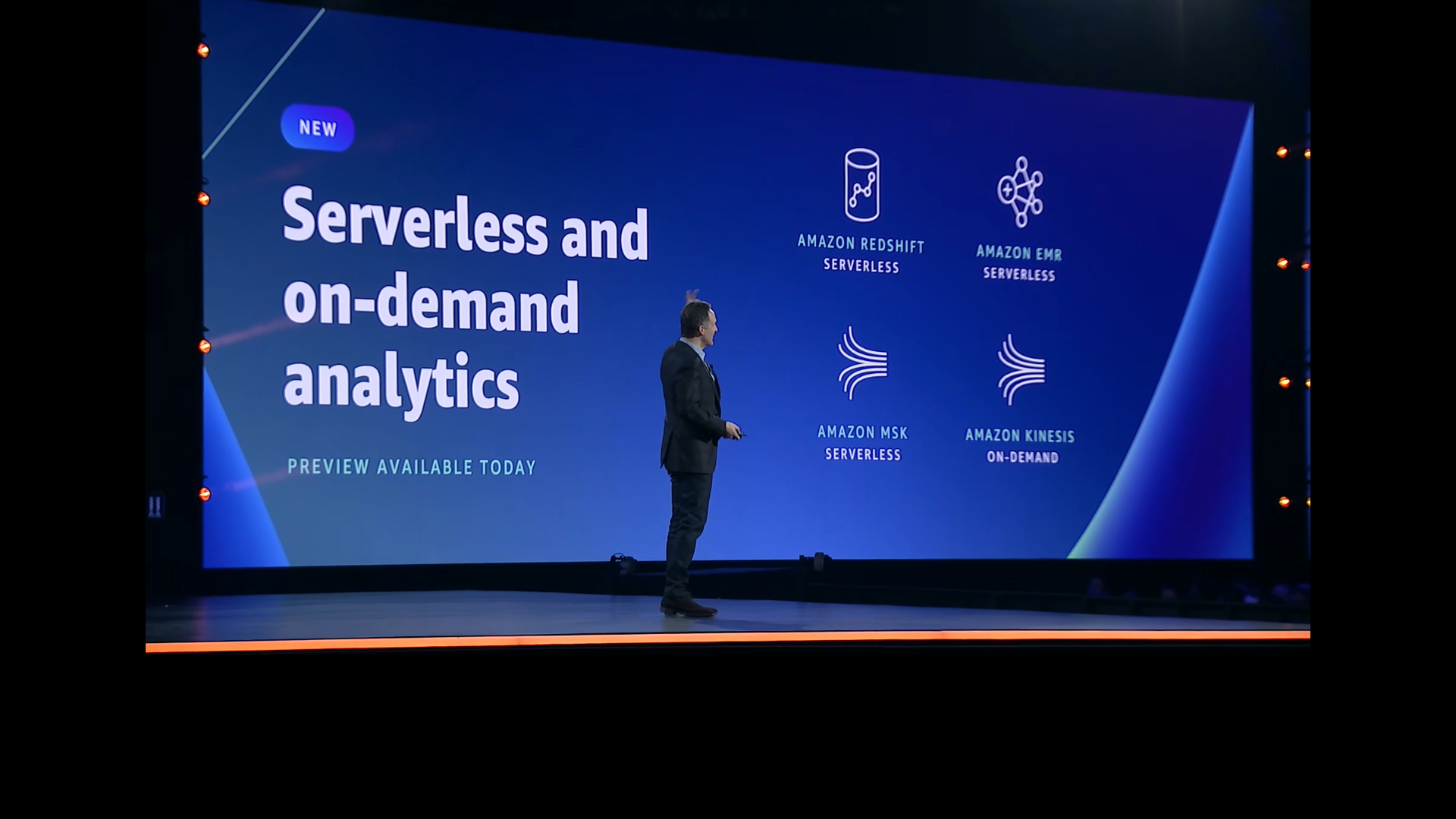Top news from re:Invent keynotes
The 10th AWS re:Invent keynote given by new CEO Adam Selipsky followed the familiar format and provided totally new services and expected updates to existing ones. No surprise that there were surprises!
Adam took us back the 15 years of AWS from the beginnings of S3 early EC2 instances and important launches over the years. The leading theme of his keynote was pathfinders like Florence Nightingale, Marie Skłodowska-Curie, and Hank Luisetti, showing the way and example to others on their cloud journey.
The customer cases showed that code is becoming a commodity; now, the financial industry is moving to the cloud. Examples of this were Nasdaq and Goldman Sachs, both making huge investments into their public cloud movement.

AWS is also investing in itself
The yesterday introduced Graviton3 processor underlines Amazon's movement more and more heavily into their silicon. Graviton Ready Program boosts the transition away from the currently dominant x86 architecture. Graviton3 will start from EC2 as a new C7g instance type and gradually find its way to other services. Graviton3 is 25% better in computing than the previous Graviton2, and even more in specialized workloads like cryptography and machine learning. By the way, did you know there are already 475 EC2 instance types wherefrom to choose? And customers are demanding more new EC2 instance types to fit better their compute purposes and needs.
AWS Private 5G
Perhaps the most revolutionary service launch in this year's AWS CEO keynote was AWS Private 5G that allows – as the name says – to build private 5G networks with all required assets provided by Amazon. That is a natural continuation to AWS 5G service offering and allows use cases, like manufacturing sites and field deployment applications, to utilize a secured and controlled networking for their equipment. As Private 5G it connects to existing AWS security services, its governance sounds like an easy task.
AWS IoT TwinMakers
5G lays the layer for next-level IoT, and this topic saw two new services in preview: AWS IoT TwinMaker and AWS IoT FleetWise. AWS IoT TwinMaker makes it easy to create digital twin graphs of real-world systems, like the aforementioned manufacturing sites. The cool thing here is that it does not require moving the IoT data first into some processing location but can be used directly by connecting to sources. AWS IoT FleetWise then is targeted especially for automakers for large scale vehicle data collection, transformation, and transfer for being used further in e.g. predictive maintenance and modelling advanced driver assistance systems. By this move AWS steps into new territory where carmakers and their IoT cloud partners have been building specialized platforms.

Serverless Analytics
Many people working with data analytics and data streams will welcome the four new Serverless Analytics services that were launched in preview: Redshift Serverless, EMR Serverless, MSK Serverless and Kinesis on-demand. All these help development and smaller deployments bring down costs and enable new architectures built with these services. For example, you can direct queries through Redshift Serverless to backend data stores like S3 or Aurora and RDS databases without Data Warehouse provisioning and administration, and you can gradually start growing your DW with refined datasets for analytics. Another good example is Kinesis Data Streams. You were previously able to scale only ten times per day with limited scaling factors, and re-sharding Kinesis has required so far a deep understanding of data stream dynamics and self-made automation.

Amazon SageMakers Canvas
Our last pick from Adam Selipsky's keynote is Amazon SageMaker Canvas, a no-code Machine Learning prediction tool that you can use for creating ML models in a purely visual environment. SageMaker Canvas is part of the ever-growing SageMaker AI/ML service family, and it follows the low-code/no-code trend that has gained momentum recently. Transferring ideas from business to production is often too slow process as the implementation part is the main bottleneck. That can be seen also as a continuation of the data democratization movement. It does not only apply to the data anymore but also to the data processes!
As many times before, the first keynote gave only the first samples. Three more keynotes are yet to come, and they will be watched closely. Knowit has an on-site team in Las Vegas feeling the pulse; stay tuned for updates from AWS re:Invent 2021!
-1.png?width=2048&name=lasvegas%20audio%20(1)-1.png) Photo: Rolf Koski
Photo: Rolf Koski




